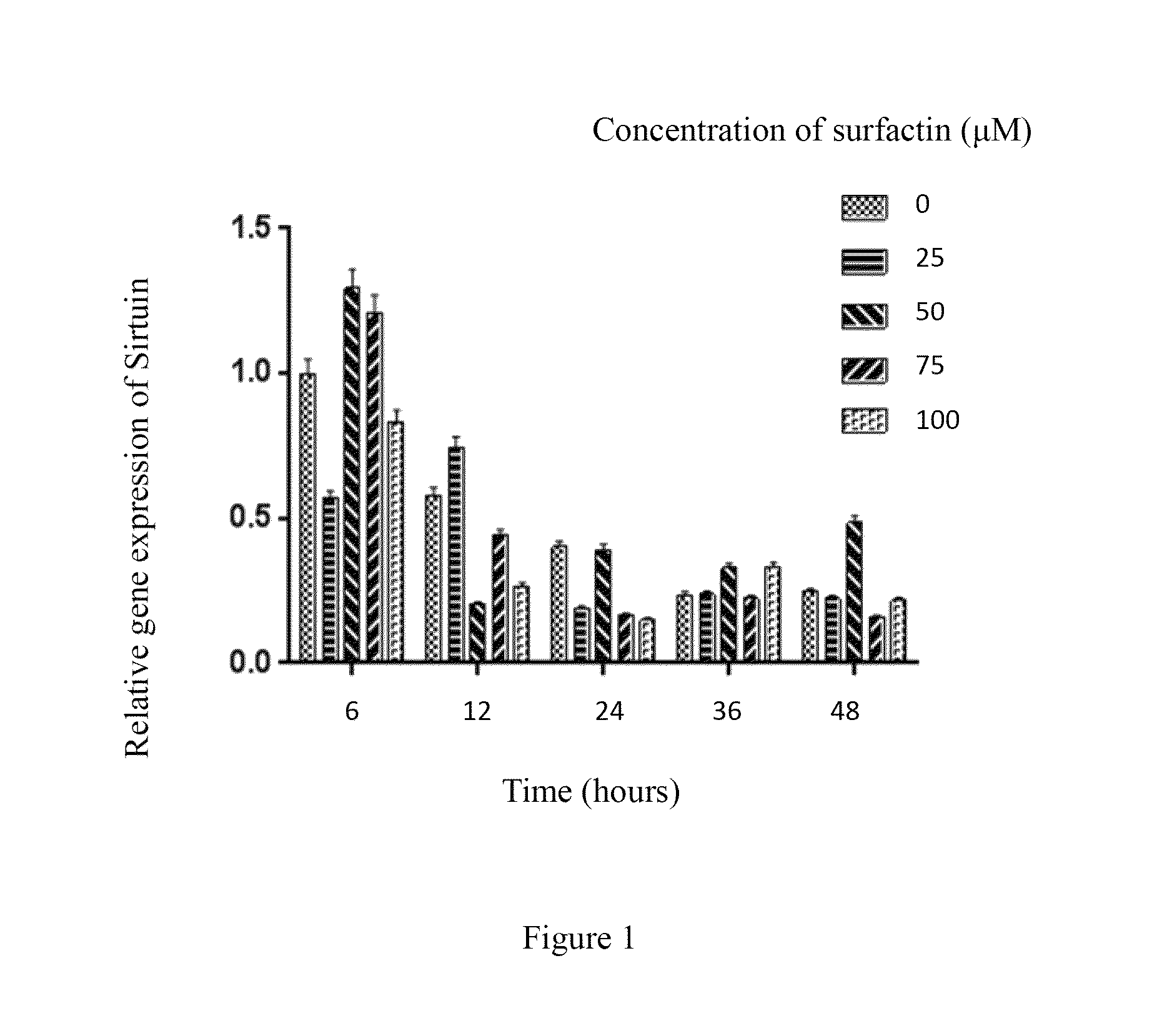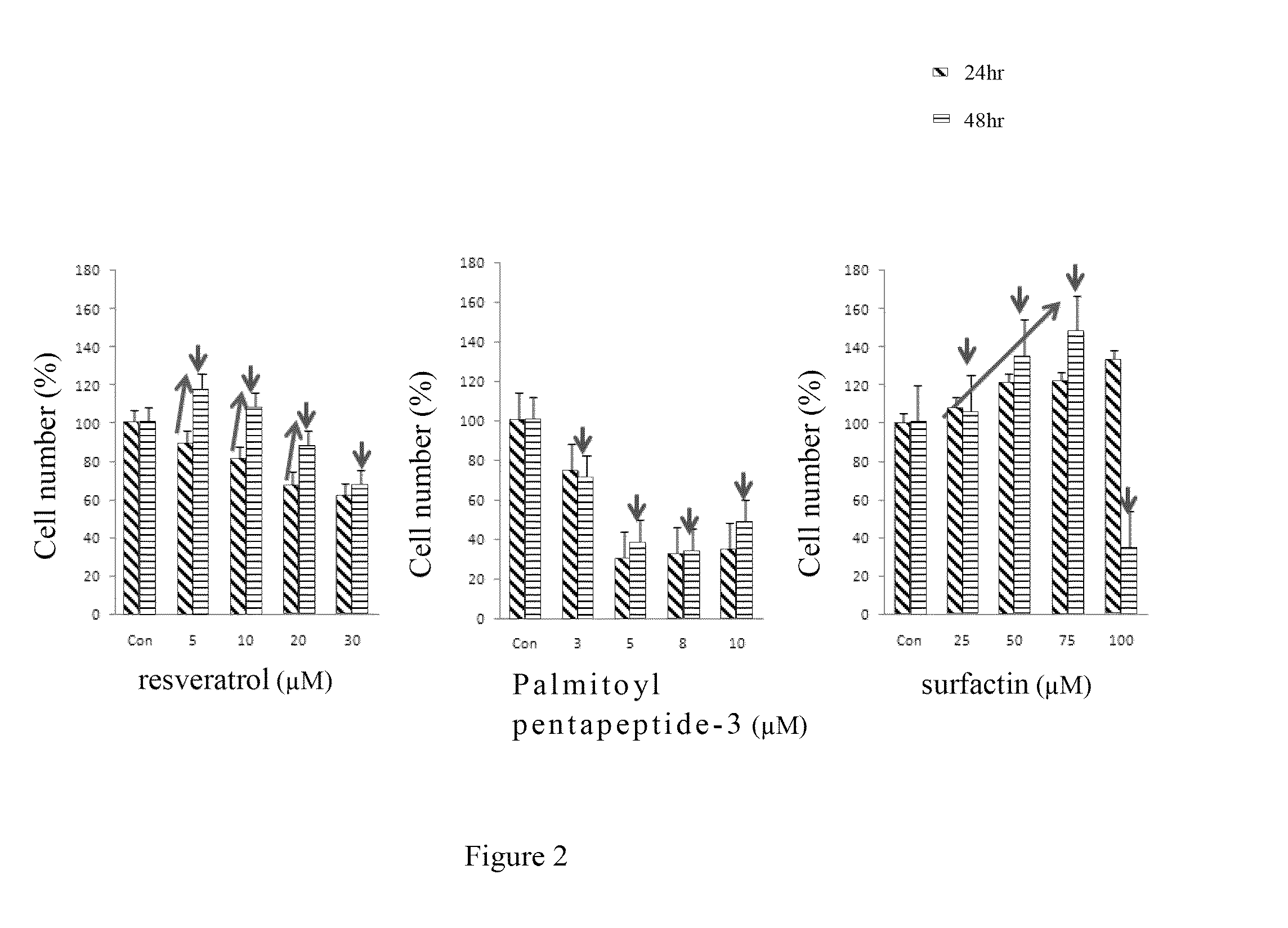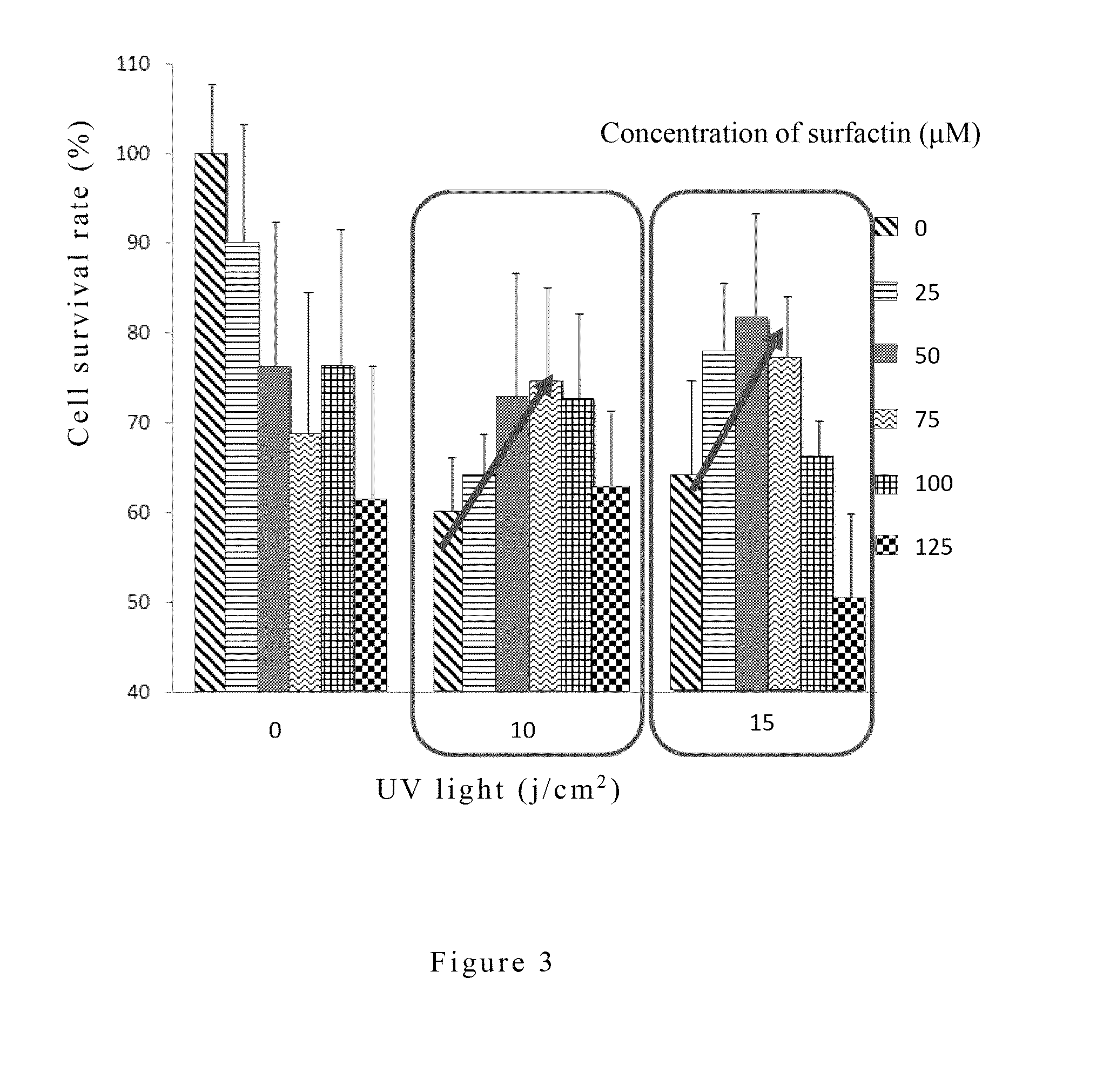Method for anti-aging treatment by surfactin in cosmetics via enhancing sirtuin
a technology of surfactin and cosmetics, applied in the field of surfactin, can solve the problems of inducing apoptosis of cells, irregular division and granular-or-twisted abnormal cell appearance, and deterioration of structural and functional conditions of some tissues and organs, so as to increase cell survival rate, protect the effect of the cell, and increase the cell survival ra
- Summary
- Abstract
- Description
- Claims
- Application Information
AI Technical Summary
Benefits of technology
Problems solved by technology
Method used
Image
Examples
example 1
Anti-Aging Effect of Surfactin on Human Skin and Mouse Embryo Fibroblasts
[0067]Materials and Methods
[0068]1. Cell Lines
[0069]Human skin fibroblast (CCD-966SK) was purchased from BCRC and the No. 60153
[0070]2. Mouse BALB / 3T3 embryo (BALB / 3T3 Clone A31) was purchased from BCRC and the No. 60009.
[0071]3. Animals
[0072]Single-sex BALB / cByJNarl mice weighing 200˜250 g were purchased from National Laboratory Animal Center (Taiwan). Throughout the experiment, the mice were housed in air-conditioned (humidity at 75%) and temperature-adjusted (25° C.) cages with a 12-h light / dark cycle and free access to water and food at the Animal House of Department of Life Science, Ocean University.
[0073]4. Expression of the Anti-Aging Genes
[0074](1) cDNA Sequence Cloning of Human and Mouse Genes
[0075]Total RNA was extracted from human skin fibroblasts and mouse embryo fibroblasts using TRIzol reagent (Invitrogen, USA), analyzed by RNA gel electrophoresis and subjected to RT-PCR for amplification of human...
example 2
Surfactin has the Effects of Anti-Photoaging and Anti-Oxidation
[0094]1. Surfactin has Anti-Photoaging Repairing Function
[0095]Following subculture of the mouse embryo fibroblasts and incubation for 4 hours for attachment, the cells were irradiated by UV-A at energy densities of 0 J / cm2, 10 J / cm2 and 15 J / cm2 in a UV light hybridization box, followed by addition of 25, 50, 75, 100 and 125 μM of surfactin. After incubation for 24 hours, cell survival rates were measured by the MTT method.
[0096]From FIG. 3, surfactin has anti-photoaging repairing function. After irradiation by UV light at the energy density of 10 J / cm2, 25, 50, 75, 100 and 125 μM of surfactin can all increase cell survival rate and among which the concentration of 75 μM shows the best protection. Moreover, after irradiation by UV light at the energy density of 15 J / cm2, 25, 50, 75, 100 and 125 μM of surfactin can all increase cell survival rate and among which the concentration of 50 μM shows the best protection.
[0097]...
example 3
Surfactin Induces Production of Collagen in Mouse Embryo Fibroblasts
[0100]1. Analysis of the Concentration of Collagen
[0101]Sircol™ soluble collagen assay kit was used for analysis the total concentration of collagen in the culture media and the general method is described as follows:
[0102]Place 0.1 ml of the test samples and the standards at different concentrations in separate 1.5 mL centrifuge tubes. Add 1 mL of dye reagent and vortex for 35 minutes, followed by centrifugation at 12000 rpm for 10 minutes and remove the supernatant. Carefully remove the residue water at the side of the tube to avoid contact with the precipitate. Add 1 mL of Alkali reagent to dissolve the precipitate and transfer 0.2 mL to a 96-well pate after the color has developed and measure absorbance at 570 nm using an ELISA reader.
[0103]2. Surfactin can Increase the Collagen Concentration in Mouse Embryo Fibroblasts
[0104]From FIG. 5, surfactin can induce collagen proliferation in mouse embryo fibroblasts. Wh...
PUM
| Property | Measurement | Unit |
|---|---|---|
| molecular weight | aaaaa | aaaaa |
| molecular weight | aaaaa | aaaaa |
| wavelength | aaaaa | aaaaa |
Abstract
Description
Claims
Application Information
 Login to View More
Login to View More - R&D
- Intellectual Property
- Life Sciences
- Materials
- Tech Scout
- Unparalleled Data Quality
- Higher Quality Content
- 60% Fewer Hallucinations
Browse by: Latest US Patents, China's latest patents, Technical Efficacy Thesaurus, Application Domain, Technology Topic, Popular Technical Reports.
© 2025 PatSnap. All rights reserved.Legal|Privacy policy|Modern Slavery Act Transparency Statement|Sitemap|About US| Contact US: help@patsnap.com



